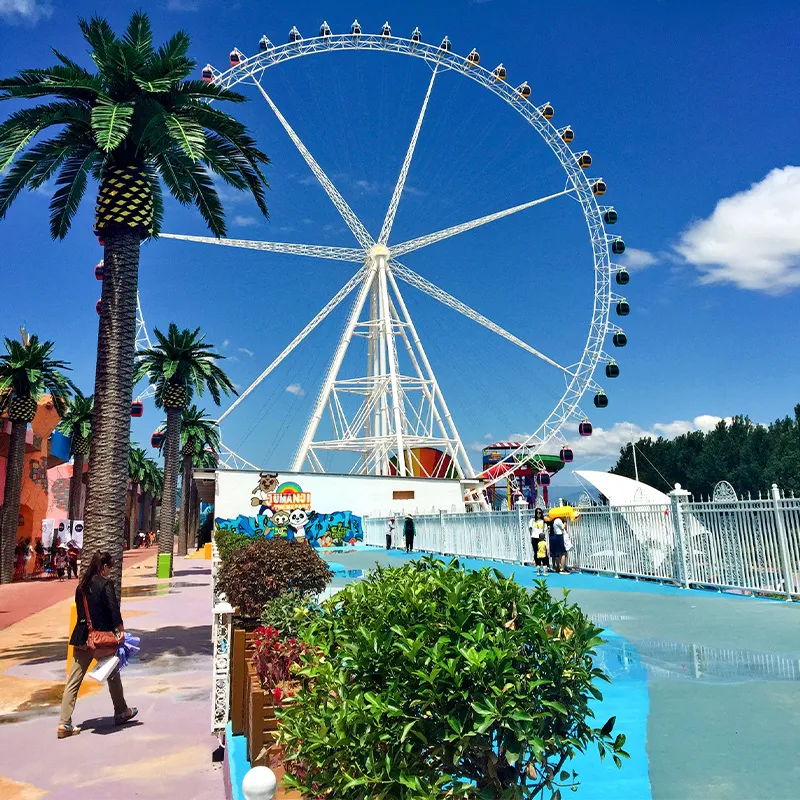drop tower
The Fascinating Concept of Drop Towers
Drop towers, also known as free fall amusement rides, are thrilling attractions that capture the imaginations of adrenaline junkies and casual riders alike. These structures, typically found in amusement parks, provide a unique blend of excitement and science that appeals to a wide audience. This article delves into the mechanics, safety features, and psychological aspects of drop towers, illustrating why they remain a popular choice among thrill-seekers.
Mechanism of Drop Towers
At their core, drop towers are designed to give riders a brief, exhilarating weightlessness experience. The mechanism is simple yet effective a vertical tower equipped with a platform that elevates riders to a significant height before releasing them into free fall. As riders ascend, they are subjected to a slow ride upwards, which builds anticipation. Once at the peak, the platform releases, and the riders plummet downward.
The free-fall experience lasts only a few seconds, but during those moments, riders experience an intense rush as they descend at immersive speeds, often exceeding 60 miles per hour. The sensation of weightlessness is heightened by the rapid acceleration downward, making it one of the highlights of the ride. Engineers harness gravity to create this heart-pounding experience while incorporating advanced technology to ensure safety.
Safety Features
Safety is paramount in the design and operation of drop towers. Amusement parks use rigorous engineering standards and adhere to strict regulations to ensure that these rides are safe for public use. Most modern drop towers are equipped with several safety measures, including
1. Harness Systems Riders are secured with over-the-shoulder restraints or lap bars, ensuring they remain in their seats during the drop.
2. Emergency Brakes Drop towers are equipped with sophisticated braking systems. If the ride experiences a malfunction, these brakes can engage to bring the platform to a halt safely.
drop tower

3. Routine Inspections Amusement parks conduct regular inspections and maintenance on drop towers to ensure optimal functionality. Safety reports and checks are a consistent part of operational protocols.
4. Training for Operators Staff operating the rides undergo extensive training to handle any emergency situations and to ensure that all safety protocols are followed during loading, operation, and unloading of riders.
These features not only protect riders but also provide them with the confidence to enjoy the experience, knowing that they are in safe hands.
Psychological Aspects
The psychological effects of drop towers cannot be overlooked. For many, riding a drop tower taps into the thrill response, where the body releases adrenaline and endorphins, creating feelings of excitement and joy. The exhilaration of free fall can also promote a sense of accomplishment, as riders conquer their fears.
Interestingly, the anticipation before the drop is often more intense than the actual plunge. The buildup creates a psychological state where fear and excitement coexist, leading to an adrenaline rush that many riders crave. This duality of emotion is what keeps customers returning to these rides season after season.
Conclusion
Drop towers stand as a testament to the marriage of engineering and entertainment. They draw visitors in with the promise of an unforgettable experience while ensuring safety through meticulous design and operation. As technology continues to advance, we can expect drop towers to evolve, pushing the boundaries of thrill and enjoyment even further. Whether you’re a seasoned thrill-seeker or a cautious first-timer, experiencing a drop tower offers a unique feeling of exhilaration that is hard to replicate anywhere else. So, the next time you find yourself at an amusement park, consider taking the plunge into the world of drop towers – you might just find it to be one of the most thrilling experiences of your life!
-
Top Amusement Equipment Manufacturer Rock n Roller Coaster & Carousel ManufacturerJun.10,2025
-
World's Scariest Roller Coaster Experience Ultimate Thrill & HeightJun.10,2025
-
Ultimate Thrill Ride Roller Coaster High-Speed, Safe AdventureMay.30,2025
-
Carousel Mansfield Rides Premium Indoor & Event SolutionsMay.30,2025
-
T3 Roller Coaster High-Thrill, Safe Ride for Theme Parks & ResortsMay.30,2025
-
Roller Coaster Cart Design Custom-Built & High-Safety Thrill Ride VehiclesMay.30,2025
